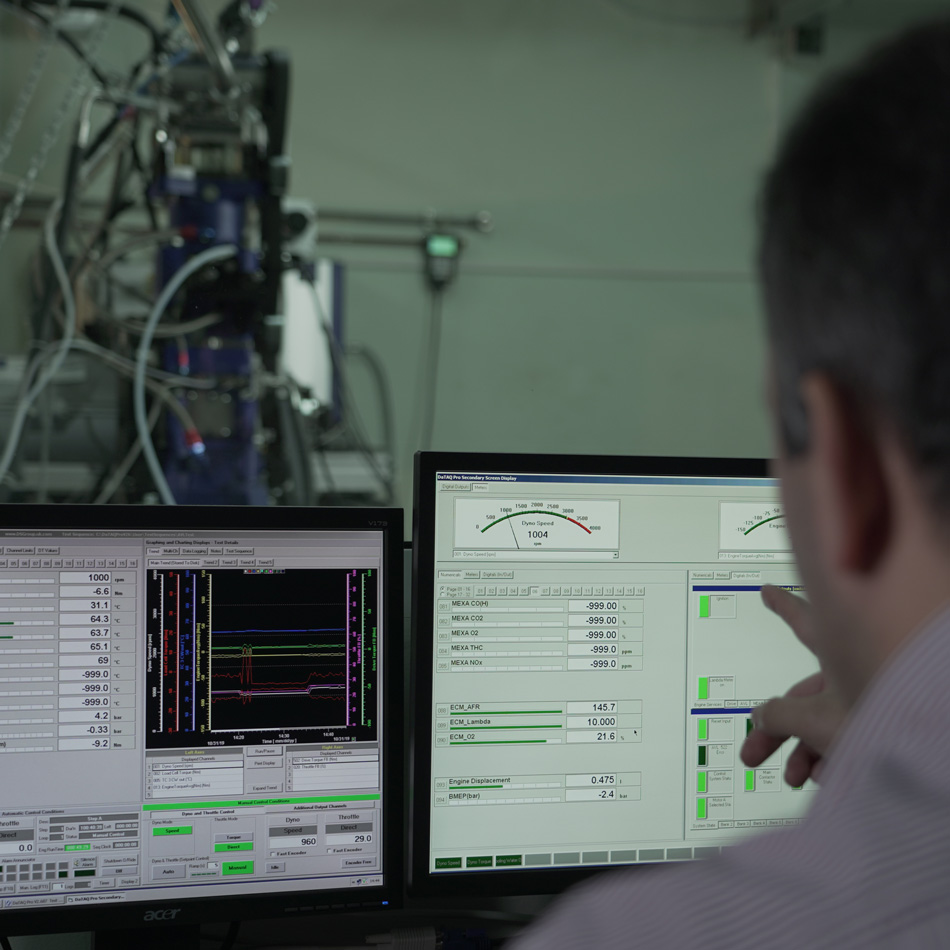Laboratory of Thermodynamics And Thermal Engines (LTTE/UoWM)
The Laboratory of Applied Thermodynamics and Thermal Engines (LTTE) is part of the Department of Mechanical Engineering of the University of Western Macedonia. The infrastructure of LTTE consists of both experimental and computational facilities. The experimental facilities include a subsonic wind tunnel, hot wire anemometers, a portable gas analyser, high accuracy scales, a bomb calorimeter and we are expecting a multi-gas analyser capable of monitoring emissions of internal combustion engines. Instrumentation for optical measurements in fluid mechanics and combustion include a 10 Hz repetition rate Nd-Yag laser with a double pulse operation module, a Dye Laser, an Intensifier and a 10 Hz CCD camera for PIV (Particle Image Velocimetry) and PLIF (Planar Laser Induced Fluorescence) measurements in reacting, non-reacting and multi-phase flows. A high frame rate camera (100000 frames per second at the lowest resolution) will be embedded to our optical measurements instrumentation soon. There are also two laser power-meters to support the laser operation for the above mentioned measurements. Moreover, the laboratory has an engine test cell dynamometer set-up which will be installed after the purchase of a single cylinder (500 cc approximately), gasoline direct injection, optical engine. The computational infrastructure includes a 64-processor (AMD 2218 2.6GHz) cluster and a 32-processor Linux cluster with Intel 2.8GHz processors in a rack arrangement, used for parallel flow and combustion simulations. There are also additional one- and two-processor computers for pre- and post-processing and simulations. The codes used are either in-house MPI-based parallel codes, based on spectral and spectral element methods, or commercial (StarCD and Ansys-CFX).
Applications of our infrastructure may include fluid mechanics, fundamental combustion and internal combustion engines investigation, aerodynamics, multiphase flows, computational combustion and computational fluid mechanics. More specifically the hot wire anemometers along with the wind tunnel could be used for flow field investigation generated by air foils and other structures and additionally the 2D PIV instrumentation that we have could give planar flow fields for such applications with just one measurement. Moreover the wind tunnel could be used for pressure field measurements around structures with appropriate located pressure tapings. PIV could be also used in many applications that planar flow field quantification is necessary (engines, multiphase flows, combustors etc.). The PLIF set-up could be used for the quantification of concentration of different species in reacting (e.g. OH or CH species) and non -reacting flows (mixing). It is a useful tool both for the investigation of the reaction mechanisms and for the quantification of mixing properties (e.g. scalar mixing and dissipation rate). The optical engine set-up along with the above mentioned equipment and the gas analysers could be used for the investigation of different parameters in the operation of internal combustion engines (e.g. ignition delay, fuel, etc.) with minor modifications on the basic engine design. Processes included in the above applications (reacting and non-reacting) could be simulated with our in-house code and the results can supplement the experimental data. Experimental data can also validate computational results if the full application can be simulated.
